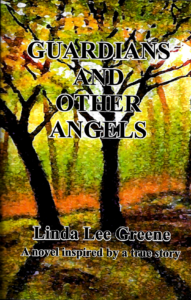C.D. Hersh's Blog, page 48
October 17, 2022
Tell Again Tuesday Knowing how to blog
How to Write a Blog Post in 2022: The Ultimate GuideBy Liz Careathers
There are many tutorials that can teach you how to write a blog post.
They can educate you on the mechanics of blogging, what to do, and what not to do.
Read through them and you can learn how to craft a perfectly serviceable blog post. Heck, you might even write something that wins you an adoring fan or two.
But if you dream bigger, if you want to know how to write a successful blog post that cuts through the noise and wins you legions of fans, you need something better than a run-of-the-mill tutorial.
You need an ultimate guide.
In this post — . . .
For the rest of the blog go to:October 13, 2022
Friday Feature POPPAW’S JUG
In light of so many unspeakable tragedies in an out-of-control world, to put hopeful words of any kind to paper touches on the grotesque. However, life’s troubles concurrently remind us of our courageous ancestors who sacrificed so much to pave the way for us. They would roll over in their graves if we give into helplessness and are thus struck silent. To be human is to contend with disaster and the grief it leaves in its wake. We must express our grief even as we attempt to master our despair. We have learned through our everyday living that grief can be transformed as something bearable through acts of love. To honor our traditions is an act of love that celebrates and validates our forebears. It is also a comfort-seeking pursuit for us as we carry on in their absence. The following is a true story. It recounts such an act of love on the part of my family:
 “My maternal ancestors were faithful to their generational commitment to express their respect and gratitude to their deceased relatives and friends by visiting their graves on every holiday and change of seasons. Each visit involved decorating and maintaining the graves.
“My maternal ancestors were faithful to their generational commitment to express their respect and gratitude to their deceased relatives and friends by visiting their graves on every holiday and change of seasons. Each visit involved decorating and maintaining the graves.
Back when my mother and her siblings were youngsters, their old car of the day being too small to accommodate their large brood, their mighty team of broad-backed workhorses, Roger and Smoky by name, pulled the heavy, buckboard wagon on their visits to the various graveyards in the area. Mommaw and Poppaw, taking a rare break from the demanding duties of their farm, were at the helm of the wagon. Dean, the baby of the family, sat between his parents on the high seat of the buckboard, a vantage point that overlooked the ample rumps of the horses. In the back, the seven other children, my mother among them before she was my mother, sat on bound bundles of hay perched vicariously on the gaping floorboards that formed the flat bed of the conveyance. The group of them, in perfect harmony and at the top of their lungs, accompanied by Uncle Bob and Uncle Bussy on their mandolins, sang the old song, “On Top of Old Smoky,” while the groaning wagon appeared in danger of imploding from the weight of its human cargo and the strain of the rough terrain that suffered its challenged wheels and chassis. Years later and as the first grandchildren born to the family, my brother and I also rode on that wagon on similar excursions, singing that old song in unison with our aunts and uncles at the top of our voices. My brother and I then got to ride between Mommaw and Poppaw on the high seat that overlooked the broad backs of Roger and Smoky. I was a grown woman and married, with children of my own when suddenly one day it dawned on me for the first time that the song was about the Great Smoky Mountains rather than a horse named Smoky.
I still can see in my mind’s eye the wobbly wheels of the buckboard and the iron-shod hooves of the horses kicking up clouds of dust on the deeply rutted, mud-caked lanes that lead to the remote cemeteries. One of my prized possessions is the old, earthenware jug that contained the grease Poppaw used to lubricate the screeching wheels of the buckboard. The interior of the jug’s fissured walls are coated to this day with black and slick remnants of the grease. During those journeys, every once in a while, Poppaw yelled, “Whoa, Roger…Whoa Smoky,” and the buckboard came to a grating halt. While the horses snorted from their huge nostrils and pawed the ground with their heavy hooves, their hot bodies steaming and making auras of their perspiration all around them, down from the high seat on his long legs Poppaw jumped, pulling the jug from beneath the seat, a stick jutting from its open top. The working end of the stick was wrapped in a grease-blackened cloth, and he smeared the axles of the wheels with it.
At the entrance to the road that loops the community of Cedar Fork where my parents spent their formative years, although several new homesteads have sprung up over the years, still it feels to me as if I’m entering an evolutionary backwater, a safe haven cut off from the rest of the world. These days I come to call in my car rather than on a buckboard. I take the right turn in the loop that leads past “Greene Acres,” the location of the fallen log cabin where my father and his family lived back in those days. I pull my car into the area, park, and then walk to the edge of the property, its border high above Cedar Fork Creek.
In the canyon below, sunlight filters through the trees, winking gaily upon the rushing water of the creek. I stretch my eyes to get a glimpse of the footbridge by the ancient, mountain spring that was the source of drinking and cooking water for my father’s large family long ago, and a bright ray of sun, as if switched on for my benefit by the Hand of God, isolates it and sets it aglow. I take it as a “token” message, a greeting from the spirit of my paternal grandmother, and I smile and wave at her as if she is actually standing there. Satisfied that my presence has been acknowledged and welcomed, I return to my car. Over the decades, the markers of my deceased, maternal relatives have accumulated in the graveyard in Cedar Fork, and I am shocked, as always, at the increased number of them, as beneath the tires of my car the gravel on the lane to the small, country cemetery loudly pops and crunches. There exists a legend that birds shun other neighboring trees, preferring to gather en masse instead among the leaves of an ancient pipal tree in a shimmering land across the sea, the pipal that is said to be a direct descendant of the holy tree the Buddha sat beneath while attaining enlightenment during his days of contemplation there. It might be my prolific imagination at work, but I swear a similar phenomenon occurs in a venerable oak tree that arches above the burial plot of my family, where, among Civil War and other war veterans, upper-crust titans, and lower-caste farmers of the area, Mommaw and Poppaw, my mother and father, my sister and most of my nearest, deceased maternal kin now lie.
And as if in testimony to my childhood memories of such a phenomenon, while its abutting trees appear to be empty, huddled within the gnarled branches of the wizened, oak tree, the gathered birds are perched. As I approach the graves, my presence sets in motion the flight of the birds, their overlapped and snapping black wings, for those brief moments in time, blotting out the sun.
I have read that birds are manifest angels on earth, but I am less wise about such things than when a child. Knowing it will not be confirmed to me until I complete my own earthly journey, I leave it to the humming wheel of the universe, and to my elders, all of whom on my mother’s side of my family, are already there in Cedar Fork Cemetery, and where someday my remains will mingle with theirs.”
The above essay is an adaptation of an excerpt of Guardians and Other Angels, my novel of historical fiction and true family lore. It is available in eBook and paperback on Amazon.
 Multi-award-winning author and artist Linda Lee Greene describes her life as a telescope that when trained on her past reveals how each piece of it, whether good or bad or in-between, was necessary in the unfoldment of her fine art and literary paths.
Multi-award-winning author and artist Linda Lee Greene describes her life as a telescope that when trained on her past reveals how each piece of it, whether good or bad or in-between, was necessary in the unfoldment of her fine art and literary paths.
Greene moved from farm-girl to city-girl; dance instructor to wife, mother, and homemaker; divorcee to single-working-mom and adult-college-student; and interior designer to multi-award-winning artist and author, essayist, and blogger. It was decades of challenging life experiences and debilitating, chronic illness that gave birth to her dormant flair for art and writing. Greene was three days shy of her fifty-seventh birthday when her creative spirit took a hold of her.
She found her way to her lonely easel soon thereafter. Since then Greene has accepted commissions and displayed her artwork in shows and galleries in and around the USA. She is also a member of artist and writer associations.
October 11, 2022
Wednesday Special Spotlight A Desert Kiss
This recipe for a classic meringue desert is easy to prepare and wonderful to eat. My family loves these cookies as a sweet after a good dinner. If you choose to use vanilla extract, you’ll have a classic méringue desert called La Bise (kiss in French). Bon appetite!
Almond Meringue Cookies 4 egg whites, cold eggs right from the fridge
4 egg whites, cold eggs right from the fridge
Pinch of salt
¾ or 1 cup of white sugar (I use organic raw cane sugar)
1 tbsp. almond or vanilla extract
12 whole almonds
Preheat oven to 200° F.
You need a hand or standing mixer. Mix egg whites and salt on high-speed to the consistency of dense foam.
Add sugar by small portions, mixing well. Try not to stop your mixer while adding sugar.
Add almond extract.
Cover cookie sheet with parchment. Spoon mixture into 12 cookies. You can use an ice-cream scoop. Place one whole almond on top of each cookie.
Bake for 1 hour. Lightly touch the cookie. It will have a firm crust and a soft center. That’s ideal. Turn off the oven and leave the cookies inside the oven for 1 hour.
Remove them from the oven to cool completely. Enjoy!
Here’s a little to intrigue you on Stell May’s latest time travel romance.
 After months of working like a woman possessed, Nika Morris kept her promise. Coleman House is finished. It’s gorgeous. Spectacular. Brilliant.
After months of working like a woman possessed, Nika Morris kept her promise. Coleman House is finished. It’s gorgeous. Spectacular. Brilliant.
It’s breaking her heart.
Because once the new owners move in, she’ll be cut off from the time portal to 1909, where she met and fell in love with Eli Coleman. Now stranded in her own time, she’s waited months for the key to reappear in its hiding place. Only it hasn’t. Which means Eli must have believed the terrible things she was accused of.
Back in 1909, Eli is stunned at his best friend’s deathbed confession of a shocking betrayal. Nika—his Daisy, his time-traveling wonder—was innocent. Once he finds the key, he wastes no time stepping through the portal, determined to make things right.
But the moment Eli stumbles into her shiny, noisy, confusing future, he realizes reconciliation won’t be simple. There is more than one emotional bridge to rebuild before he and Nika can return to the time their love was born—and live their destiny out to the fullest.
AMAZON BUY LINKStella May is the penname for Marina Sardarova who has a fascinating history you should read on her website.
Stella writes fantasy romance as well as time travel romance. She is the author of ‘Till Time Do Us Part, Book 1 in her Upon a Time series, and the stand-alone book Rhapsody in Dreams. Love and family are two cornerstones of her stories and life. Stella’s books are available in e-book and paperback through all major vendors.
When not writing, Stella enjoys classical music, reading, and long walks along the ocean with her husband. She lives in Jacksonville, Florida with her husband Leo of 25 years and their son George. They are her two best friends and are all partners in their family business.
Follow Stella on her website and blog. Stay connected on Facebook, Twitter, and Pinterest.
October 10, 2022
Tell Again Tuesday Do you know your characters?
Writing Tools: Getting To Know Your CharactersBy Susan Hanniford Crowley
Getting to know your characters gives you a lot to work with. Write a character description and include everything you can think of. Here is a possible list.
1. Name of Character and meaning if you can find it
2. Physical Description
3. Family background – . . .
October 6, 2022
Friday Feature History of Southern Homes
The Last Timekeepers and the Noble Slaveby Sharon Ledwith
 Antebellum-style Plantation House
Antebellum-style Plantation HouseVisions of Scarlett O’Hara’s Tara from the movie Gone with the Wind or the famous Oak Alley Plantation sweep through ones’ mind when conjuring up those antebellum period plantations of the deep south for some. However, for the black race and people of color, plantation life in the 1700s and 1800s was a constant struggle just to stay alive. In The Last Timekeepers and the Noble Slave, the third installment of The Last Timekeepers time travel adventure series, eleven-year-old protagonist Drake Bailey must confront not only his demons, but the terrible oppression and cruelty against his race in antebellum Georgia.
When I researched these grand Southern homes for my novel, I found a few myths in this mired past. In movies, plantations were often depicted as ‘mansions’ with fluted columns and a broad porch; massive trees with their drooping limbs lining circular driveways, and finely dressed men and women parading their wealth for all to see. Um, no. There were a few plantations which fit this description, but these were the exceptions. Most plantation owners lived modestly and some even poorly. The overwhelming majority of slaveholders held less than twenty slaves. Yet, even if a man only held one or two slaves, he had considerably more status in southern society than a man who held no slaves. Status was everything to the South’s white population, and the more slaves a man owned, the more respected he was.
The plantation was a world in itself. I created the fictional Taylor Plantation situated near Athens Georgia, close to where my time traveling characters would land. Trying to keep the grounds as authentic as I could, the plantation was comprised of the slave owner’s house (the Taylors) which was called the ‘big house’, the line of single-room cabins dubbed ‘slave row’ where slaves called ‘home’, and nearby loomed the overseer’s house. Scattered about this plantation were various barns and sheds where animals, tools, and the harvested crops were stored. Surrounding everything were cotton fields and woods and situated in the back of the property lurked the slave cemetery by a winding creek.
 Interior of slave quarters
Interior of slave quartersCurious on how plantations came to be? In the early 17th century, when the British colonized what would later become the United States of America, the crown offered large plots of land to settlers as an incentive for them to journey to a strange and harsh new world. Many settlers who took the deal combined their properties into larger settlements—in the South, these eventually became plantations. As these landowners needed immense manpower to maintain the plantations, they turned to slavery, importing captured peoples from Africa as forced laborers.
Plantations operated relatively unfettered in the American South for more than 250 years; the Northern states, however, had all abolished slavery by 1804. Despite Congress banning the African slave trade in 1808, the domestic slave trade in the South continued until the ratification of the 13th Amendment in 1865, which banned slavery outright.
During Reconstruction (post-Civil War years), the plantation system collapsed. While some plantations were destroyed, many were subdivided, with both black and white farmers leasing these smaller plots as sharecroppers (who would give a portion of their harvest to the landowner as ‘rent’) or tenant farmers (who paid rent). These farming practices continued through the mid-20th century until the Great Depression and advancements in farming technology got rid of traditional plantations for good.
Many people descended from African American slaves consider plantations to be the American version of Auschwitz. They’re not wrong. Filled with echoes of death and despair, Southern plantations—many of which are in disrepair and decay—are places where slavery made the romanticized southern lifestyle possible and continue to carry their dark legacy to this day.
Here’s a snippet of what to expect in the third installment of The Last Timekeepers available for purchase on all your online bookstores…

True freedom happens only when you choose to be free.
Eleven-year-old Drake Bailey is an analytical thinker and the genius of the Timekeeper crew. However, no logic or mathematical acumen can change the color of his skin or prepare him for this third Timekeeper mission in antebellum Georgia. To survive, Drake must learn to play the role of a plantation slave and when confronted with the brutality, hatred, and racism of the deep south, he’ll have to strategically keep one move ahead of his sadistic captors to ensure his lineage continues.
In a dark world of Voodoo, zombies, and ritualistic sacrifice, the Timekeepers must ensure a royal bloodline survives. Can Drake remove both literal and figurative chains to save both himself and a devout slave girl from a terrible fate? If he can’t summon the necessary courage, humanity could stand to lose one of its greatest leaders.
Here’s a glimpse of the premises of both my young adult series:
The Last Timekeepers Time Travel Adventures…
Chosen by an Atlantean Magus to be Timekeepers—legendary time travelers sworn to keep history safe from the evil Belial—five classmates are sent into the past to restore balance, and bring order back into the world, one mission at a time.
Children are the keys to our future. And now, children are the only hope for our past.
Mysterious Tales from Fairy Falls Teen Psychic Mysteries…
Imagine a teenager possessing a psychic ability and struggling to cope with its freakish power. There’s no hope for a normal life, and no one who understands. Now, imagine being uprooted and forced to live in a small tourist town where nothing much ever happens. It’s bores-ville from the get-go. Until mysterious things start to happen.
Welcome to Fairy Falls. Expect the unexpected.
The Last Timekeepers Time Travel Adventure Series:
The Last Timekeepers and the Noble Slave, Book #3
MIRROR WORLD PUBLISHING ׀ AMAZON ׀ BARNES & NOBLE
The Last Timekeepers and the Dark Secret, Book #2
MIRROR WORLD PUBLISHING ׀ AMAZON ׀ BARNES & NOBLE
The Last Timekeepers and the Arch of Atlantis, Book #1
MIRROR WORLD PUBLISHING ׀ AMAZON ׀ BARNES & NOBLE
Legend of the Timekeepers, prequel
MIRROR WORLD PUBLISHING ׀ AMAZON ׀ BARNES & NOBLE
Mysterious Tales from Fairy Falls Teen Psychic Mystery Series:
Lost and Found, Book One
MIRROR WORLD PUBLISHING ׀ AMAZON ׀ BARNES & NOBLE
Blackflies and Blueberries, Book Two
MIRROR WORLD PUBLISHING ׀ AMAZON ׀ BARNES & NOBLE
 Sharon Ledwith is the author of the middle-grade/young adult time travel adventure series, THE LAST TIMEKEEPERS, and the award-winning teen psychic mystery series, MYSTERIOUS TALES FROM FAIRY FALLS. When not writing, researching, or revising, she enjoys reading, exercising, anything arcane, and an occasional dram of scotch. Sharon lives a serene, yet busy life in a southern tourist region of Ontario, Canada, with her spoiled hubby, and a moody calico cat.
Sharon Ledwith is the author of the middle-grade/young adult time travel adventure series, THE LAST TIMEKEEPERS, and the award-winning teen psychic mystery series, MYSTERIOUS TALES FROM FAIRY FALLS. When not writing, researching, or revising, she enjoys reading, exercising, anything arcane, and an occasional dram of scotch. Sharon lives a serene, yet busy life in a southern tourist region of Ontario, Canada, with her spoiled hubby, and a moody calico cat.
Learn more about Sharon Ledwith on her WEBSITE and BLOG. Look up her AMAZON AUTHOR page for a list of current books. Stay connected on FACEBOOK, TWITTER, PINTEREST, LINKEDIN, INSTAGRAM, and GOODREADS.
BONUS: Download the free PDF short story The Terrible, Mighty Crystal HERE
October 4, 2022
Wednesday Special Spotlight Stuffed Peppers
This is a favorite of mine to use when I have leftovers. Actually, I plan so I have the right ingredients, but don’t tell my secrets.
In late summer when veggies are in top form, the sparkling green of fat bell peppers has my mouth watering. Fry up a bit more summer sausage for breakfast than you need. Pull out of the freezer that small bit of ground beef you cooked up with onion. Add a bit of chopped green onion, a dash of garlic salt. Mix with tomato soup which is undiluted. Use a ½ can if you only make up two; a whole can for four peppers. Add 1½ cups of white or wild rice that you had left over and tucked into the freezer. Voila! You are ready to assemble. All ingredients are already cooked, so you are just baking the peppers, microwave or oven.
Now if you don’t have leftovers then this is the recipe, that serves 4, to follow.
 STUFFED PEPPERS
STUFFED PEPPERS
4 green peppers, red or yellow are good too
½ cup summer sausage, cooked, drained
½ cup ground beef, cooked, drained
1½ cups cooked wild or white rice
1 can tomato soup, regular size
Dash of garlic powder
Pinch of salt and pepper to taste
2 tbsp. chopped green onion
Freshly grated Parmesan cheese
Parsley garnish, optional
Preheat oven to 350° F.
Cut the top off peppers and discard stems, chop tops into small sizes and leave in bowl. Remove seeds from peppers and arrange in baking dish.
Mix remaining ingredients in bowl with chopped tops and then spoon into peppers. Cook for about 30 minutes. Sprinkle with the parm. May be refrigerated and served next day. Warm in oven or microwave.
Late summer harvest presents many choices for salads and dessert. A side dish of fruit and a slice of cheese (so many excellent selections). Corn bread is also a great taste with the peppers.
Enjoy!
Here is a brief intro to the cozy mystery series Emma writes as Janis Lane.
MURDER in the JUNKYARD sees the demise of a man no one likes, a romance, and plans for a wedding as Detective Fowler and his friends keep their small-town America free from danger.
Detective Kevin Fowler is furious that low life has targeted his town where people live in blissful safety. Brenda Bryant is out junkn’ for good things when she stumbles over the grotesque body of a man beloved by no one. Suspense heats up when large sums of money are found in two different places. Drug money is suspected, and Brenda targeted by someone who wants the money returned. Detective Fowler faces surprise after surprise as he peels back the surface of Hubbard, New York and deals with its shocking underbelly. Meanwhile romance infiltrates the group of friends with a wedding in the making.
AMAZON BUY LINK
Emma Lane is a gifted author who writes cozy mysteries as Janis Lane, Regency as Emma Lane, and spice as Sunny Lane.
She lives in Western New York where winter is snowy, spring arrives with rave reviews, summer days are long and velvet, and fall leaves are riotous in color. At long last she enjoys the perfect bow window for her desk where she is treated to a year-round panoramic view of nature. Her computer opens up a fourth fascinating window to the world. Her patient husband is always available to help with a plot twist and encourage Emma to never quit. Her day job is working with flowers at Herbtique and Plant Nursery, the nursery she and her son own.
Look for information about writing and plants on Emma’s new website. Leave a comment or a gardening question and put a smile on Emma’s face.
Stay connected to Emma on Facebook and Twitter. Be sure to check out the things that make Emma smile on Pinterest.
October 3, 2022
Tell Again Tuesday Difference between Setting and Mood
Setting the Mood in a sceneBy Wareeze Woodson
Thanks for taking the time to read my article. I have discussed the ins and outs of writing in past articles, the hero, the heroine, the villain, setting the scene, character development, where I find my inspiration for each story, and the lists continues. Today, I would like to discuss the difference between the setting and the mood in each scene.
Much must be considered when writing the setting of a scene. The requirements necessary for such an endeavor are . . .
For the rest of the blog go to:September 29, 2022
Friday Feature Sea Shipping Lanes
The most famous water ways in the world are the two beautiful Straits—the Bosphorus and the Dardanelles. The Bosphorus connects the Black Sea, where Russia has ports such as Sevastopol, to the Marmar Sea. Each year approximately 50,000 ships pass through the Bosphorus. Grain, produce, and 3 million gallons of oil are transported through the Bosphorus each year. The Dardanelles connect73s the Marmara Sea to the Aegean Sea and the Mediterranean Sea and from there to the world’s shipping lanes. For hundreds of years, the Straits were under the control of the Ottoman Empire and when the Ottoman Empire became the Turkish Republic in 1923, the Straits became known as the Turkish Straits.
The Turkish Straits have long been the coveted entrance to the world for land-locked Russia. For over two hundred years, as her territory and population expanded, Russia has tried to secure warm water ports, year-round ports such as Odessa that do not freeze in the winter. Warm water ports would enable her to increase her trading capacity. In the early days, it was the Ottoman Empire that controlled the Straits, and the Ottoman Empire fought many wars to prevent Russia from capturing them and the Ottoman Empire’s capital city of Constantinople. Now it is the Republic of Turkey that controls the Straits and faces Russia’s renewed attempts to wrench control of the Straits from Turkey through invasion of the Ukraine, parts of which were once known as Crimea. Russia’s goal: capture of the port city of Odessa.
 My historical novel– Lady Munevver: The Opium Merchant’s Daughter— is set in the Victorian period as England is preparing to enter the War in the East, the Crimean War, to support the Ottoman Empire that has been invaded by Russia. Russia’s 1853 invasion of Crimea results in three Empires—England, France, and the Ottoman Empire– declaring war on Russia. It precipitates a disastrous marriage for Lady Munevver. It changes the world with advances in ships and military weapons, the development of the telegraph with its ability to deliver war news almost instantly, and the creation of modern nursing in Scutari Hospital.
My historical novel– Lady Munevver: The Opium Merchant’s Daughter— is set in the Victorian period as England is preparing to enter the War in the East, the Crimean War, to support the Ottoman Empire that has been invaded by Russia. Russia’s 1853 invasion of Crimea results in three Empires—England, France, and the Ottoman Empire– declaring war on Russia. It precipitates a disastrous marriage for Lady Munevver. It changes the world with advances in ships and military weapons, the development of the telegraph with its ability to deliver war news almost instantly, and the creation of modern nursing in Scutari Hospital.
In Surrey, England, the merchant father of beautiful but handicapped Munevver is obsessed with gaining acceptance by the Ton. Refusing Munevver’s plea to marry her childhood love, William of Yorkshire, he arranges a marriage with James, the dissolute son of an impoverished, hard-handed Duke.
When England is drawn into the Crimean War, James joins the Light Brigade and sails to the Ottoman Empire to fight the invading Russians. After learning her husband has died in Scutari Hospital, an improvised hospital for English soldiers located across the Bosphorus from Constantinople, Munevver, terrified at what her father-in-law might do, flees England. Her destination: the ancient city of Aleppo in the eastern part of the Ottoman Empire where she hopes her uncle will shelter her in his vast trading compound.
Her escape ends in Constantinople when. the Sultan, irate at Queen Victoria’s command that he return the widow of one of her Lords, arranges a marriage for Munevver with Ari, a member of his court. Problem solved. Munevver is now the wife of an Ottoman citizen. She is invisible.
Banished to the ancient, primitive city of Ankara, the young couple struggles to survive political intrigue, intense cold, and lack of medical care. After Ari dies of tuberculosis, Munevver is desperate to return to Yorkshire, to her grandfather and to the man she loves, William. But how? Dare she accept the quid pro quo arrangement offered by the most powerful woman in the Ottoman Empire, the Sultan’s mother?
Available in e-book and paperback.
Amazon Buy Link
Eris Field was born in the Green Mountains of Vermont—Jericho, Vermont to be precise—close by the home of Wilson Bentley (aka Snowflake Bentley), the first person in the world to photograph snowflakes. She learned from her Vermont neighbors that pursuit of one’s dream is a worthwhile life goal.
As a seventeen-year-old student nurse at Albany Hospital, Eris met a Turkish surgical intern who told her fascinating stories about the history of Turkey, the loss of the Ottoman Empire, and forced population exchanges. After they married and moved to Buffalo, Eris worked as a nurse at Children’s Hospital and at Roswell Park Cancer Institute.
After taking time off to raise five children and amassing rejection letters for her short stories, Eris earned her master’s degree in Psychiatric Nursing at the University at Buffalo. Later, she taught psychiatric nursing at the University and wrote a textbook for psychiatric nurse practitioners—a wonderful rewarding but never to be repeated experience.
Eris now writes novels, usually international, contemporary romances. Her interest in history and her experience in psychiatry often play a part in her stories. She is a member of the Romance Writers of America and the Western New York Romance Writers. In addition to writing, Eris’s interests include Prevention of Psychiatric Disorders; Eradicating Honor Killings, supporting the Crossroads Springs Orphanage in Kenya for children orphaned by AIDS, and learning more about Turkey, Cyprus, and Kurdistan.
Learn more about Eris Field on her website. Stay connected on Facebook.
September 27, 2022
Wednesday Special Spotlight Carpenter Country Recipe
We like to bake here in Carpenter Country, and we love to eat what we bake. Today we want to share one of our favorite recipes with you. Hope you enjoy as much as we do.
 Photo by rakratchada torsap
Photo by rakratchada torsap3-2-1 Pear-Up
3 pears, peeled and sliced
3 tbsp. sugar
3 tbsp. oatmeal
2 tbsp. pecan pieces
2 tbsp. flour
2 tsp. lemon juice
1 tsp. pumpkin pie spice (or cinnamon, if you prefer)
1 tbsp. butter
1 spritz nonstick cooking spray
Preheat oven to 350°F
Spritz the bottom of a 9″ round pie pan with nonstick cooking spray.
Toss the pear slices in the lemon juice and add them to the pie pan.
Measure the sugar, oatmeal, pecan pieces, flour, and spice into a plastic baggie. Shake to mix. Add the butter and knead the bag with your fingers until the mixture resembles soft crumbs.
Empty the bag of topping mixture into the pie pan on top of the pears.
Bake for 20 minutes or until the pears are soft.
Tips and tricks
Add a tablespoon of butter on top of the pears if you like a syrupy juice.
Experiment with different types of nuts for different flavors.
Raisins or dates add a sweet touch.
Top each serving with sweetened whipped cream for extra yum.
The last one is my personal favorite.
Helen
 Once upon a time there was a mother/daughter author duo named Helen and Lorri, who wrote as HL Carpenter. The Carpenters worked from their studios in Carpenter Country, a magical place that, like their stories, was unreal but not untrue. Then one day Lorri left her studio to explore the land of What-if, and like others who have lost a loved one the magical place lost much of its magic. But thanks to family, plus an amazing group of wordsmiths named Authors Moving Forward (AMF), the magic is slowly returning.
Once upon a time there was a mother/daughter author duo named Helen and Lorri, who wrote as HL Carpenter. The Carpenters worked from their studios in Carpenter Country, a magical place that, like their stories, was unreal but not untrue. Then one day Lorri left her studio to explore the land of What-if, and like others who have lost a loved one the magical place lost much of its magic. But thanks to family, plus an amazing group of wordsmiths named Authors Moving Forward (AMF), the magic is slowly returning.
Helen Carpenter loves liking and sharing blog posts from other authors. She lives in Florida with her husband of many years and appreciates every day, especially those without hurricanes.





